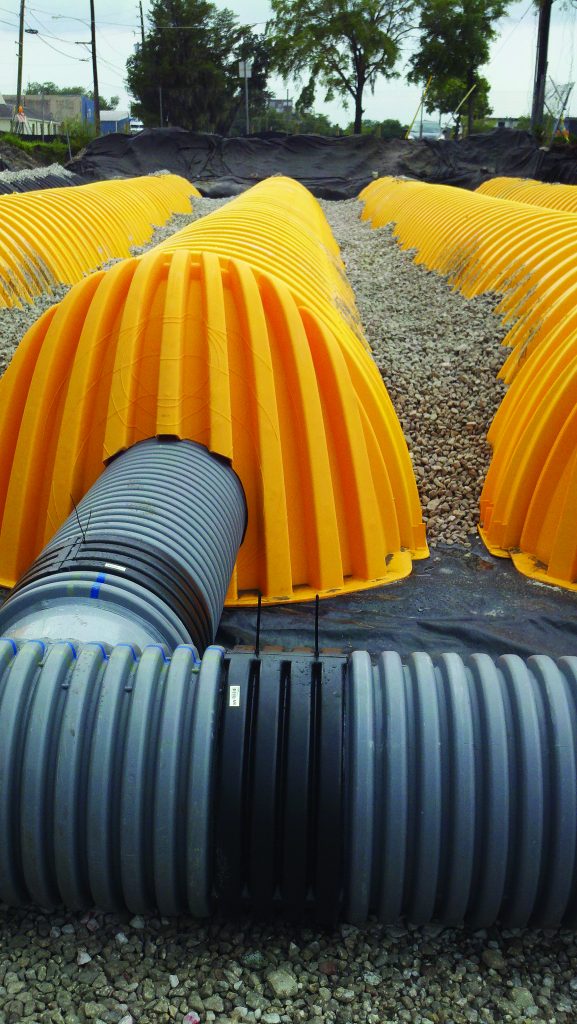Stuart Crisp, UK manager of Advanced Drainage Systems (ADS), highlights possible causes of failure in these important assets.

One of the challenges of underground attenuation assets is that, somewhat obviously, they are buried. Consequently, inspection during construction, post-construction surveys and snagging is not always undertaken which can result in mistakes going unnoticed and a risk of failure.
With the eventual implementation of Schedule 3 of the Flood and Water Management Act 2010, mandating the use and adoption of SuDS for new developments in England, this issue will become more pertinent.
Any SuDS asset owner and SuDS Approving Body (SAB) must be confident that they are minimising the adoption of liabilities with the underground SuDS elements. SABs should know why design decisions were made, how products were chosen (and whether swapped out by the contractor), the record of quality and technical checks made, and the implications for performance, durability and maintenance over the asset’s life.
Designers should consider the performance and behaviour of an asset across its lifecycle including short- and long-term loading, maintenance, operation costs and end-of-life. To produce a robust specification, they must understand how standards and guidance apply to structural performance, materials, product design, and manufacture and installation, since these factors contribute to the asset’s integrity and durability.
And those making decisions about product choice may not have all the knowledge they need to understand the implications.
Using a hard-to-clean attenuation system (geocellular crates can be an example), means that the size of the tank should be increased by 10%, as advised in CIRIA C753 The SuDS Manual. Without adequate upstream sediment capture, there can be an even greater risk that the tank’s storage volume will reduce over time due to sediment build-up.

The system design must consider the amount, concentration and types of pollutants to be expected in the storm water runoff and the respective treatment flow rates for the components used in the management train, as well as hydraulic flow rates. The design must also embrace inspection and maintenance regimes.
‘Spec breaking’ to choose cheaper products can also increase the risks of failure. An alternative product may appear to perform in the same way, but it should be checked whether it meets all the relevant standards and has been certifiably tested.
Poor workmanship is often a reason for failure. While easy-to-install systems can save time and may reduce risk, systems with multiple components and fixings will obviously require higher levels of skill and supervision and introduce more risk.
The frequency and ease of maintenance of SuDS system will come under close scrutiny once SABs prepare to adopt assets because these factors will influence the commuted developer contributions handed over on asset adoption. Asset owners must think about access, ease of cleaning, the need for additional upstream treatment devices, and whether standard cleaning or specialist equipment is required.
Due diligence for any would-be asset owner must cover decisions made at all stages of the design and delivery of an underground SuDS attenuation device. Failure to do this risks failure of the system through poor performance, or higher maintenance and asset lifetime costs than anticipated.

Stuart Crisp is UK Manager for Advanced Drainage Systems (ADS). ADS is America’s largest manufacturer of thermoplastic corrugated drainage pipes and a specialist in water management systems. StormTech has a long and successful track record with over 50,000 below ground SuDS attenuation system installations using in excess of 3m units.
Originally published in NDE October 2024